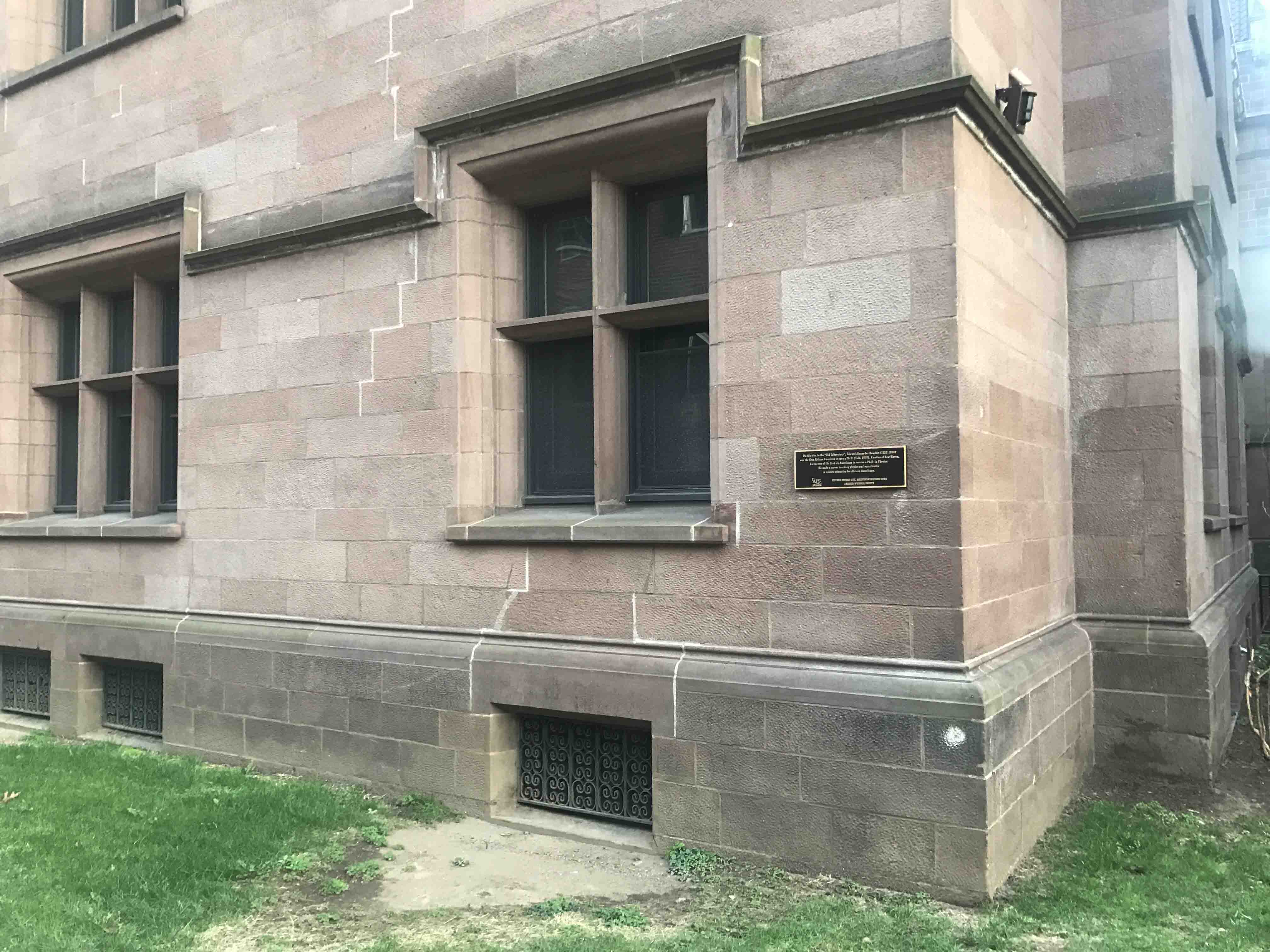
A plaque honoring physicist Edward Bouchet, class of 1874, who became the first African-American to earn a doctorate at an American university when he received his Ph.D. from Yale in 1876, went up on Friday on the north side of Vanderbilt Hall, where Bouchet’s place of research once stood.
The unveiling ceremony, which took place at Linsly-Chittenden Hall, was the opening event of the three-day 14th Annual Yale Bouchet Conference on Diversity and Graduate Education. Associate Dean for Graduate Student Development and Diversity Michelle Nearon, professor emeritus of epidemiology Curtis Patton, professor of physics Jack Harris and faculty from the University of Michigan, Wake Forest University and Clark Atlanta University all delivered remarks on the legacy of Bouchet’s work. The speeches were followed by the unveiling of the plaque, which was granted by the American Physical Society.
“There was a real absence on Science Hall of something tangible commemorating Bouchet. There was a strong sense of his history as an important piece of Yale history,” said Harris, who chaired the Physics Department committee on Bouchet’s honoration.
The committee applied for the plaque through the American Physical Society’s Historic Sites Initiative, which aims to raise public awareness of the discipline. It took two years and one re-application before Bouchet’s plaque was approved, and another year for the ceremony to be organized, Harris said.
Born in 1852, New Haven native Bouchet received his historic doctoral degree 141 years ago. He was the sixth person to earn a physics doctorate in the western hemisphere and was also inducted into the honor society Phi Beta Kappa. Although he completed innovative work in optics, Bouchet is most well-known for his career as an educator. At the time, obtaining a professorship was difficult, largely because of racial discrimination. As a result, Bouchet went on to teach at the School for Colored Youth in Philadelphia, one of the few institutions that provided African-Americans with intensive academic instruction.
Today, the Sloane Physics Laboratory on Science Hill houses a portrait of Bouchet. Harris said the American Physical Society has strict policies regarding placement of the plaque in the original research site, and hence the plaque is placed on the north face of Vanderbilt Hall, near the former site of the Old Laboratory where Bouchet conducted his research.
“It’s pretty inspiring to think that [Bouchet] got his Ph.D. so long ago, when racism was a million times more worse and more ingrained than it is now,” applied physics major George Iskander ’20 said. “[The plaque] definitely marks a time where Yale and other colleges are placing emphasis on inclusivity for STEM.”
Yale and Howard University, a historically black university, co-founded the first chapters of the Edward Alexander Bouchet Graduate Honor Society in 2005. The society focuses on highlighting diverse excellence in scholarly pursuits, leadership and character. Over a dozen universities, including Cornell and Rutgers, now have their own chapters.
“As someone who wants to go into academia, it’s very comforting to have an inspiration like Bouchet who lets me know that even as an African American, I can get a Ph.D., do groundbreaking research and create a lasting legacy,” said Kenneth Adusei ’20, a molecular, cellular and developmental biology major.
Rayo Oyeyemi ’20, another STEM major, said reading about Bouchet’s legacy changed her perception of who belongs to Yale.
“I made a statement last semester that even though I’m surviving and thriving, that [Yale] was not created for us,” Oyeyemi said. “My mom sent me an article about Edward Bouchet and said that ‘if he could do it, I could do it.’ This university was meant for people who look like me.”
Last week, the Afro-American Cultural Center announced the date of the Bouchet Ball, a formal gala honoring the physicist and the continued history of achievements by students of color at Yale.







